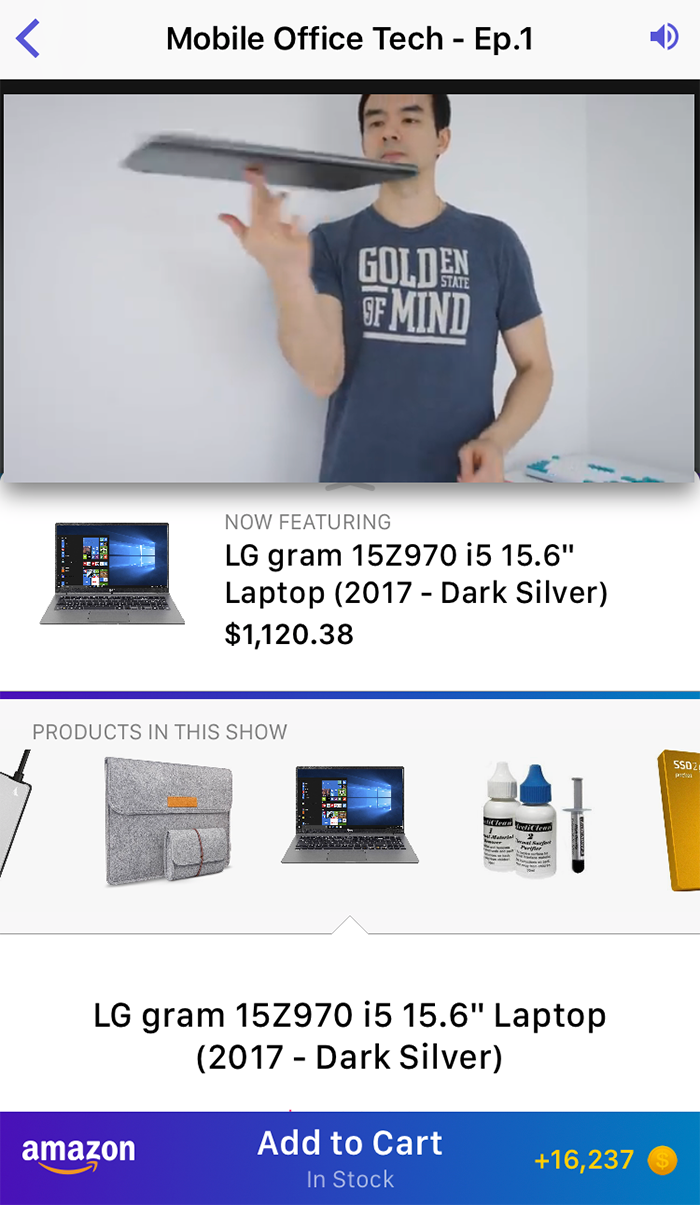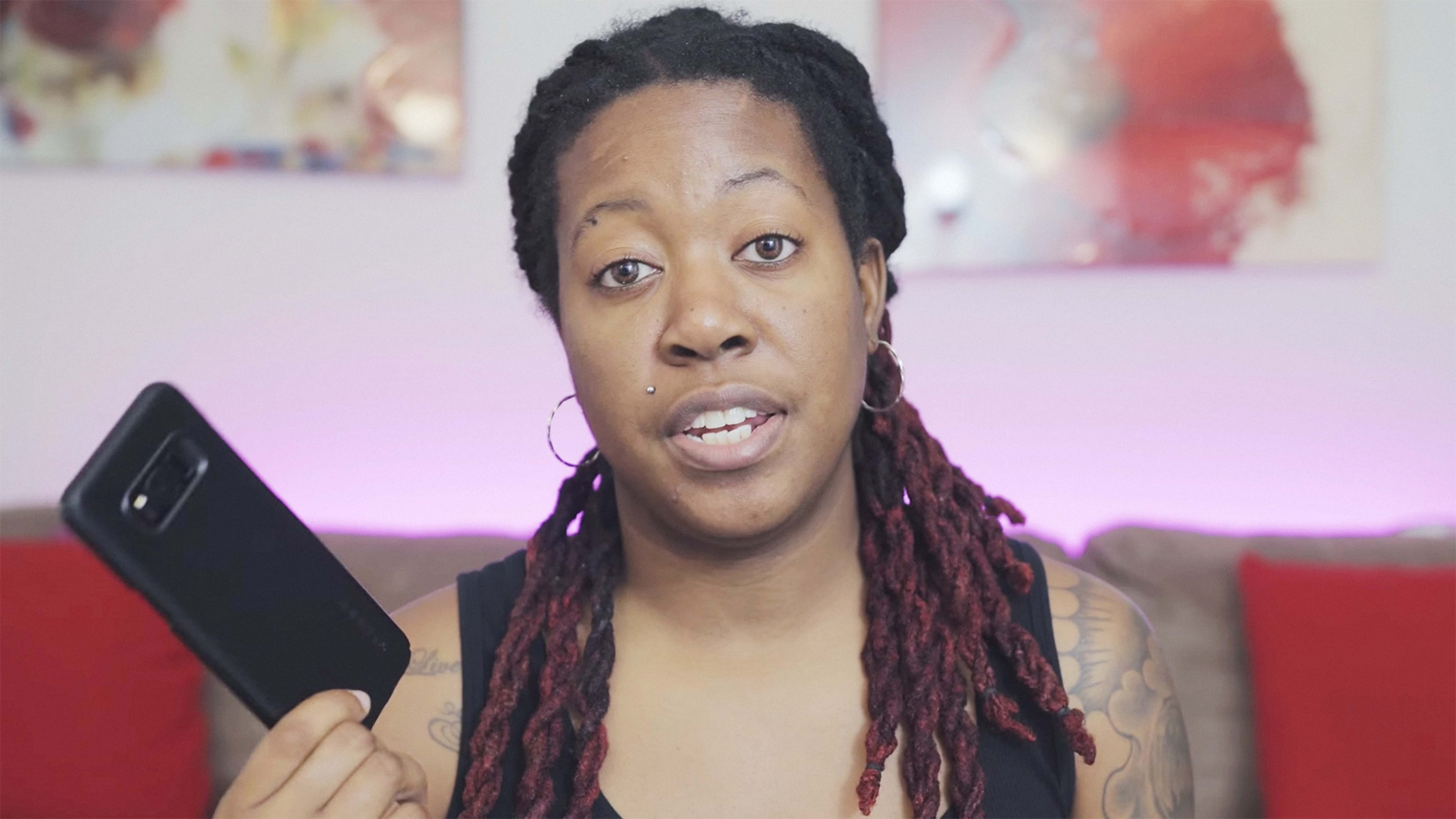When he was CTO at Hulu, Eric Feng focused on delivering a slick experience for Hollywood shows and movies that drew a wide audience. With his new company, Packagd, Feng is focusing on a more low-fi format, but one that still counts millions of viewers—and possibly customers: user-generated product porn.
The company’s first app, Unboxed, aggregates “unboxing” videos—those homemade documentaries of a person’s first encounter with a new gadget—from star geeks like Austin Evans, whose YouTube channel of funny reviews and how-tos has over 2 million subscribers. Starting with tech devices, Feng aims to eventually add yet-to-be-named channels for toys and beauty products, creating what he describes as an online version of QVC or the Home Shopping Network for millennials.
“What we want to do is entertain first, and we think throughout the entertainment journey people will buy,” says Feng.
Unboxing videos have become a sensation, capturing the exciting moments of opening up much-desired new products like a superstar smartphone or a high-end makeup kit. YouTube channel Unbox Therapy, for instance, has racked up nearly 1.4 billion views since 2010. But the genre has evolved from its nerdy roots.
“Unboxing is almost a synonym now for authentic product viewpoint,” says Feng. It has grown beyond unwrapping, extending to things like product reviews and tutorials, he says. But today’s videos retain at least some of the casual style of the originals—the low-budget aesthetic born in one-take, single-camera shots from someone’s living room or kitchen.
They are also quite frank. In an Apple vs. Samsung smartphone comparison, a YouTuber who goes by Canoopsy says, “The Galaxy S8 speaker is total garbage. It sounds like you’re in a fish tank filled with water and you have bubble wrap on your ears.”
“The raw nature of the video makes it also feel more authentic,” says Feng. “It’s not like 12 different camera angles and a crazy studio with special effects.”
I’m not sure what Michael Bay-grade product reviews Feng has been watching, but videos by now-establishment sites like CNet and Engadget have progressed to high production values that may seem formulaic. They are slick and informative, but not surprising or very engaging. YouTubers often cultivate relationships with fans. For her channel, TechMe0ut asked viewers what style videos they would like to see in the future. They asked for themed segments, and she obliged, starting with one about Amazon deals under $100.
“Unboxers have really cracked the format of content that’s both super engaging and entertaining but also informative,” says Feng. Evans, for instance, became famous with his funny, fast-talking excitement. A 2014 video, with 5.7 million views, features unscientific tests between the iPhone 6 and Samsung Galaxy S5 smartphones. Scrawny, with wireframe glasses, spiky hair, and a splash of acne, the young Evans performs funny tests, like seeing which phone can open up and play Angry Birds faster (the iPhone) or capture better slow-mo video of him and his friend jumping around in a park (iPhone again).
Fast-forward to last May. Evans has clear skin, a better haircut, and has been flown out to Shanghai by Microsoft to preview its new Surface Pro tablet/laptop. Production value has also gone way up, too, but the style is still chatty and occasionally silly.
More laid back is Kevin Nether, aka Kevin the Tech Ninja (about 158,000 subscribers). His videos feature chill background music and plentiful onscreen graphics, but they don’t go overboard on polish. One of Feng’s favorites is a recent tutorial on smart-home devices such as the Nest thermostat. In it, the audio volume inexplicably drops for a few seconds. Instead of reshooting the scene, Nether simply superimposed the text “WTF AUDIO???” over the segment
An Online QVC
Feng has recruited a bunch of unboxers, including Evans, Nether, and TechMe0ut as curators to turns evergreen content like product reviews into six hours per day of “live” programming. Curators will pick videos (their own or others’) and host live chat with viewers as they play, mimicking the effect of watching and calling into the Home Shopping Network or QVC. Feng is obsessed with updating that successful formula for the geriatric segment into something that will grab the attention of millennials addicted to unboxing videos.
“The best, most successful example of interactive video is QVC,” says Feng. “They have video content that drives users to pick up the phone and call in.”

Feng has long been enamored of interactive video. In 2006, he founded Mojiti, a video-sharing site that allowed people to place annotations on videos. In 2007, he sold Mojiti to a startup called Hulu, which used the technology as the basis of its video platform and brought him on as CTO.
Feng later served as CTO of Flipboard—a customizable news aggregator that was one of the early hit apps on the iPad. Another inspiration was Twitch, which turned the phenomenon of people videoing their own video game experiences into a near billion-dollar business. From these experiences, Feng realized he didn’t have to create all the content from scratch, as QVC has done. “When we discovered that the community of unboxers was doing it and they had cracked the code on content, that’s when we got super excited,” he says. “We had this hypothesis, reinvent QVC based around unboxing videos.”
Packagd has raised $7.5 million, with seed funding from Kleiner Perkins Caufield & Byers, where Feng remains a general partner, and a series A round lead by Forerunner and GV, formerly Google Ventures.
Like QVC, Unboxed blurs the line between entertainment and advertising. “The overlap of commercial content and entertainment content in this category is almost 100%,” he says. Unboxed aims to make money from both types. Videos feature buy links to the products discussed. Best Buy is the company’s retail partner, and all revenue from sales will go to the video creators—the incentive to get them on board.
“One of the things we think is missing right now is, they’re just not getting enough credit as they should for driving purchases,” says Feng.
He says that Unboxed may sell a few items—popular products from companies it has a close relationship with, such as the Microsoft Surface. But the company plans to make most of its money from sponsored video. “Say you are Nintendo, and you’ve got the new Switch launching,” he says. “Why don’t you buy an hour or a half-hour time slot inside of the Unboxed app all week of launch?” Nintendo could provide its own video or curate ones from YouTube creators, says Feng. A Nintendo product manager or engineer might host live chat with fans.
If this model works for tech products, Packagd will launch apps for other markets this year: first beauty products and then toys. (The latter could include video from kid bloggers like the wildly successful Ryan ToysReview channel, which has about 8 million subscribers and 800 million monthly views.)
Scarcely mentioned in my conversation with Feng is the word “journalism.” YouTubers may or may not adhere to a strict division between editorial and business interests the way that traditional publications do. “There’s different types of unboxers,” says Feng. “Some have celebrity status, some get paid to do unboxing or get sponsored, some get free products. A lot of people actually still purchase products.”
Feng feels that bloggers make adequate disclosure. In his Microsoft Surface video, for instance, Evans says, “Big shout out to Microsoft for inviting us out here, all the way to Shanghai.” But he doesn’t say if he was paid to do the video, or how much. “Sometimes there’s significant money involved,” says Feng.
Evans dings aspects of the product, from the selection of ports to Microsoft’s insistence that it’s a laptop even though a keyboard is extra. He also deliberately chuckles at the notion that it compares to performance of an iPad. Feng points to this video as a model for the genre. Financial interests will ultimately keep the YouTubers honest, he claims. “They’re not going to degrade their brand,” he says. “Because the truth is out, and the second they lose that authenticity for their viewers, their viewers will leave them.”
Recognize your brand’s excellence by applying to this year’s Brands That Matter Awards before the early-rate deadline, May 3.
